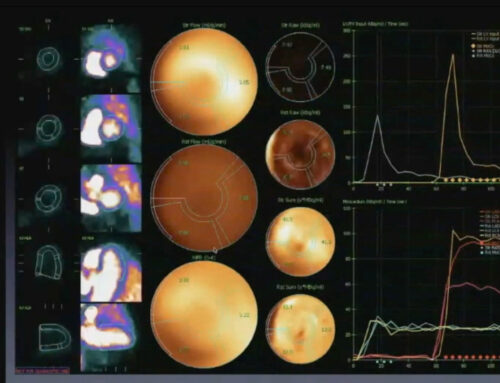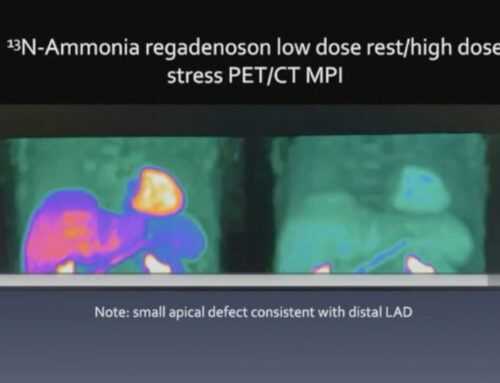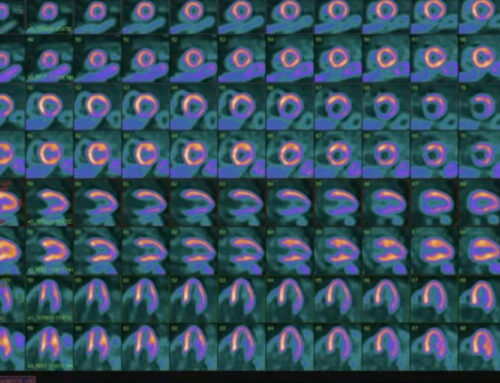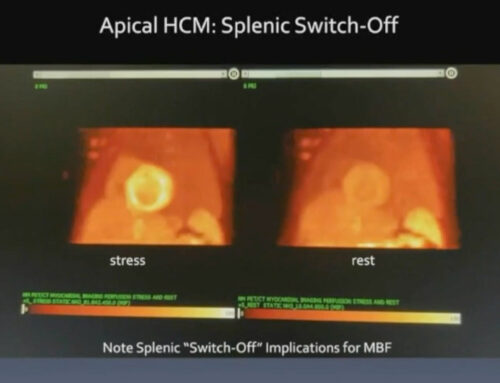Presented by: Tom L. Rosamond, MD, MSc, FAHA, FACC, FASE
Dr. Thomas Rosamond is Board Certified in Cardiovascular Disease. Dr. Rosamond is the Division Chief of Cardiovascular Imaging and Medical Director of Non-Invasive Imaging Services at The University of Kansas Health System. He earned his Postdoctoral Fellowship in Cardiovascular Magnetic Resonance Imaging at Washington University School of Medicine -Barnes Jewish Hospital in St. Louis, Missouri.
Advancing Pediatric Cardiac Care: Low-Dose Imaging and Complex Condition Management
In the realm of pediatric cardiology, modern diagnostic advancements are fundamentally transforming our approach to assessing and managing congenital heart conditions. As pediatric cardiologists face the unique challenge of diagnosing and treating children—whose hearts and bodies are still growing—innovative imaging technologies are playing a crucial role in offering precise, patient-centered care. By integrating low-dose imaging with the capacity to assess complex conditions, we can now provide better diagnostic clarity while minimizing risks, particularly for young, vulnerable patients.
Technological Innovation Meets Pediatric Cardiology
Cardiac imaging in pediatrics is at the forefront of merging cutting-edge technology with a focus on patient safety. For years, imaging techniques like X-ray, CT scans, and MRIs have been pivotal in diagnosing pediatric cardiac issues. However, these traditional methods often present concerns when it comes to radiation exposure, especially in young children who may need lifelong monitoring for congenital conditions.
Recent advancements, particularly in nitrogen-based imaging technologies, offer a breakthrough by allowing comprehensive cardiac assessment with significantly reduced radiation doses. These innovations enable healthcare providers to monitor heart health with unparalleled accuracy while safeguarding the patient from the long-term risks of radiation exposure.
Radiation Dose Considerations in Pediatric Imaging
The Critical Imperative: Minimizing Radiation Exposure
In pediatric cardiology, minimizing radiation exposure is not just a precaution—it’s an ethical and clinical necessity. Children are more sensitive to radiation than adults due to their developing tissues and longer life expectancy, which increases the potential for radiation-induced harm over time. Therefore, the lowest possible radiation dose is paramount in pediatric diagnostics.
New technologies like nitrogen-based imaging (e.g., nitrogen ammonia PET CT) are emerging as a preferred technique. These imaging modalities offer the advantage of providing high-quality, detailed cardiac images while significantly reducing radiation exposure. This not only improves safety but also enhances the ability to make accurate diagnoses in complex pediatric cases, ensuring that children receive optimal care without compromising their long-term health.
Diagnostic Capabilities of Advanced Imaging
Key Technological Advantages
- Exceptional Signal-to-Noise Ratio: One of the standout features of advanced imaging technologies is their superior signal-to-noise ratio. This means clearer, more accurate images that allow for a better understanding of the heart’s function and structure, even in the smallest patients.
- Detailed Visualization of Cardiac Structures: These innovations provide unparalleled clarity in visualizing the complex structures of the heart, including coronary arteries, myocardial tissue, and valves. This level of detail is crucial for diagnosing congenital heart defects and tracking their progression over time.
- Comprehensive Assessment of Cardiac Function: Advanced imaging allows for the assessment of several key factors, including:
- Functional Cardiac Mapping: The ability to visualize and assess the heart’s functional activity, such as electrical activity and contractility.
- Perfusion Data Sets: Imaging can capture real-time data on blood flow through the heart, revealing areas of reduced perfusion that may indicate potential problems.
- Blood Flow Dynamics: Advanced techniques also provide insights into how blood is flowing through the cardiac chambers, which is crucial in understanding the hemodynamic status of pediatric patients.
- Stress Responses: These imaging techniques can also assess how the heart responds to stress, simulating conditions that may not be present under normal circumstances but could develop during periods of exertion or illness.
Understanding Complex Conditions: The Case of Giant Coronary Aneurysms
One of the key advantages of advanced imaging in pediatric cardiology is its ability to identify and manage complex congenital heart conditions like giant coronary aneurysms. Though rare, giant coronary aneurysms are serious conditions that can lead to life-threatening complications, including rupture, thrombosis, or myocardial infarction.
- Long-Term Perspectives: While this condition is rare, studies show that up to 50% of pediatric patients diagnosed with giant coronary aneurysms may require coronary artery bypass grafting (CABG) or percutaneous coronary intervention (PCI) within a 30-year follow-up. This highlights the critical need for long-term, continuous cardiac monitoring in these patients, with advanced imaging offering the most accurate means of tracking disease progression over the years.
- Lifelong Monitoring: Given the potential for progression into adulthood, lifelong monitoring of coronary aneurysms is essential. Pediatric cardiologists must integrate advanced imaging techniques into regular follow-ups to ensure timely detection of complications and to guide treatment strategies as patients age.
- Treatment Options: Treatment for complex congenital heart conditions may include:
- Coronary Artery Bypass Grafting (CABG): A surgical intervention that bypasses blocked or narrowed coronary arteries to improve blood flow to the heart.
- Percutaneous Coronary Intervention (PCI): A minimally invasive procedure used to treat narrowed coronary arteries, often involving the insertion of a stent to keep the artery open.
Emerging Trends in Pediatric Cardiac Care
The diagnostic landscape of pediatric cardiology is shifting toward a more comprehensive approach, integrating long-term patient monitoring and a broader understanding of congenital heart disease.
- Increasing Recognition of Adult Congenital Heart Disease: With advances in pediatric care, many children born with congenital heart defects are surviving into adulthood. As a result, there is growing recognition of the need for specialized adult congenital heart disease care.
- Growing Awareness of Kawasaki Disease: Another emerging trend is the increased awareness and understanding of Kawasaki disease, a condition that can cause inflammation in the coronary arteries and lead to aneurysms if left untreated. Early diagnosis through advanced imaging is key to preventing long-term damage.
- Comprehensive, Longitudinal Monitoring: Pediatric cardiac care is moving away from episodic treatment models toward continuous, lifelong monitoring. This shift reflects a broader trend in medicine: the importance of monitoring chronic conditions over the patient’s lifetime to ensure the best outcomes.
Clinical Implications
The future of pediatric cardiac care lies in an integrated, patient-centered approach that emphasizes both advanced diagnostic technology and long-term care strategies. Pediatric cardiac imaging is evolving from a simple diagnostic tool to a comprehensive management strategy that addresses:
- Precise Risk Assessment: Advanced imaging technologies enable more accurate and detailed assessments of risk, allowing for earlier intervention and more personalized care plans.
- Minimally Invasive Approaches: Techniques like nitrogen-based imaging offer safer, less invasive alternatives to traditional imaging, ensuring that young patients are exposed to minimal risk.
- Patient Comfort and Safety: With innovations like low-dose imaging, pediatric patients can undergo frequent scans with little discomfort or risk, making it easier to follow their progress over time.
- Long-Term Prognostic Insights: The ability to track cardiac conditions over the course of a patient’s life allows healthcare providers to develop more proactive treatment strategies and ensure that interventions occur at the optimal time.
The future of pediatric cardiac care lies at the intersection of technological sophistication and a commitment to patient-centered approaches. By leveraging advanced imaging techniques that reduce radiation exposure while providing precise diagnostic data, healthcare providers can revolutionize the way they diagnose, treat, and manage congenital heart conditions. As we continue to advance the capabilities of cardiac imaging, we are not just improving patient outcomes in the short term—we are shaping the future of pediatric heart health for generations to come.





